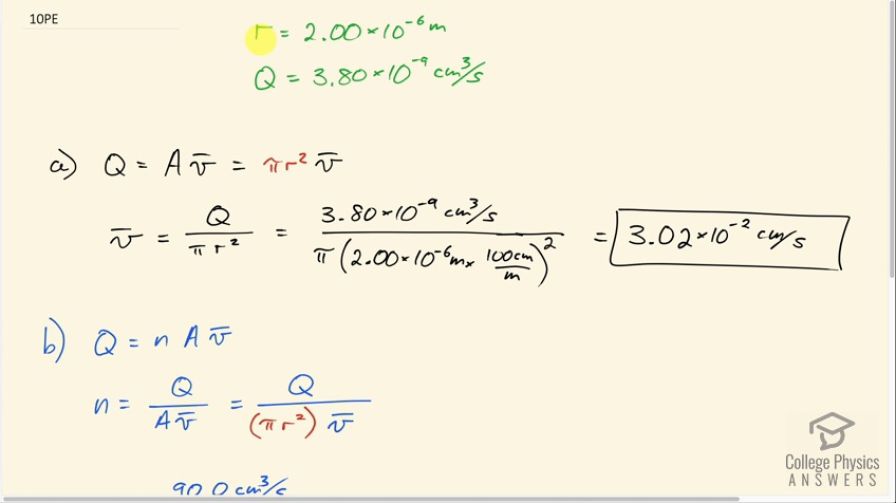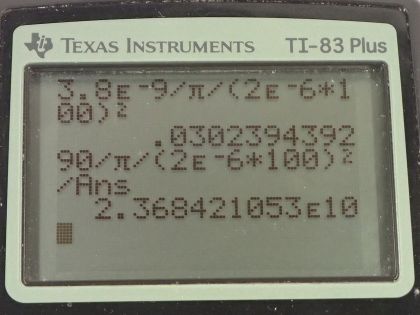Question
The flow rate of blood through a radius capillary is . (a) What is the speed of the blood flow? (This small speed allows time for diffusion of materials to and from the blood.) (b) Assuming all the blood in the body passes through capillaries, how many of them must there be to carry a total flow of ? (The large number obtained is an overestimate, but it is still reasonable.)
Final Answer
Solution video
OpenStax College Physics for AP® Courses, Chapter 12, Problem 10 (Problems & Exercises)

vote with a rating of
votes with an average rating of
.
Calculator Screenshots
Video Transcript
This is College Physics Answers with Shaun Dychko. The volume flow rate of blood through a capillary is 3.80 times 10 to the minus 9 cubic centimeters per second and the radius of that capillary is 2.00 micrometers and in part (a), we have to figure out what speed does the blood flow through this capillary? So volume flow rate is the cross-sectional area of the tube multiplied by the average speed and we can replace this area with πr squared because the cross-section is a circle and this is the formula for the area of a circle and then we can solve for v by dividing both sides by πr squared and so we have the average speed then is the volume flow rate divided by πr squared. So that's 3.80 times 10 to the minus 9 cubic centimeters per second divided by π times the radius, which we have to convert into centimeters because we have cubic centimeters on the top here and so we need to have square centimeters in the denominator. So we convert to centimeters by multiplying by 100 centimeters per meter and then square that result and you end up with 3.02 times 10 to the minus 2 centimeters per second so that's 0.3 millimeters every second— it is very slow and that slowness allows for diffusion of oxygen and nutrients across the wall of the capillary into neighboring cells. Part (b) says that given that the volume flow rate in total of all the blood from the heart is about 90 cubic centimeters per second, how many capillaries must there be if each one has blood traveling at the speed through it and with that given area and so the total flow rate is going to be the number of capillaries times the flow rate in a single capillary. So these Q's are not the same by the way... this Q is the volume flow rate in a single capillary and this is the volume flow rate in all capillaries. Okay! So we will solve for n—the number of capillaries—by dividing both sides by area times speed. So the number of capillaries is the volume flow rate Q divided by the cross-sectional area πr squared times the average speed. So that's 90.0 cubic centimeters per second divided by π times 2.00 micrometers— which is 2.00 times 10 to the minus 6 meters converted into centimeters so that this factor will be consistent with the units in the other factors and we have centimeters cubed here and centimeters here so we need to have centimeters squared for this factor as well— and then multiply that by 3.0239 times 10 to the minus 2 centimeters per second and we get 2.37 times 10 to the 10 capillaries.

